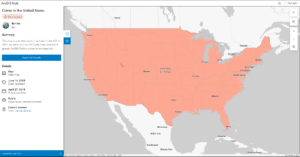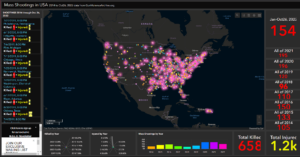Chapter 4
Mitchell’s fourth chapter introduces us to the concept of mapping density, a technique that has increasingly captivated my interest for its ability to visualize the concentration of geographical phenomena, such as population or occurrences of events. Through different methods like color gradation, dot distribution, and symbol variation, density mapping offers a lens to discern underlying patterns that might suggest actionable insights. This chapter meticulously explains how density can be represented in two fundamental ways: by defined areas or through creating a density surface, each with its applications depending on the type of data at hand. For instance, a density surface, generated as a raster layer in GIS, offers a detailed view suitable for individual data points or samples, making it an invaluable tool in environmental studies for analyzing pollution dispersion or wildlife habitats. This exposition prompts me to question the practical steps involved in transitioning from raw data to a polished density map. Specifically, how do GIS analysts choose the most appropriate method for their specific data type, and what challenges do they face in ensuring the accuracy and interpretability of density maps? Furthermore, considering the application of density mapping in urban planning, what are some examples where this technique has directly influenced policy or planning decisions, especially in the context of resource allocation or emergency response planning?
Chapter 5
In Chapter 5, Mitchell explores spatial query techniques that allow us to determine activities or characteristics within specific geographical boundaries. This discussion is pivotal, revealing three primary methods for identifying what’s inside an area: mapping area boundaries, selecting features within boundaries, and overlaying areas and features to merge data layers. Each approach serves a distinct purpose, from visualizing spatial relationships to generating detailed summaries of features within an area. This granularity in analysis fascinates me, especially when considering the potential to monitor and manage phenomena like chemical exposure or crime rates within delineated zones. It raises the question: How do analysts decide which method to employ based on their specific objectives, and what are the implications of these choices on the comprehensiveness and accuracy of the analysis? Additionally, the chapter’s focus on discrete versus continuous features prompts further inquiry into how this distinction affects the selection of spatial query techniques in various contexts, such as environmental monitoring or urban development projects. Are there particular scenarios where one method significantly outperforms the others, and how do these techniques adapt to the complexities of large-scale, multi-layered GIS projects?
Chapter 6
Chapter 6 shifts the focus to proximity analysis, a concept that resonates with me due to its wide applicability in both everyday life and specialized fields. Mitchell introduces methods for assessing what lies beyond a target area’s boundaries, such as measuring straight-line distances, distances over a network, or cost surfaces. This chapter not only broadens my understanding of how GIS can be used to evaluate the influence of nearby features but also highlights the strategic importance of determining areas of influence for planning and decision-making. For example, the discussion on network-based analysis versus cost surface analysis illuminates the nuanced considerations in capturing the true costs of movement or access, particularly in urban planning or emergency services deployment. This leads me to ponder the criteria that guide the choice among these methods, especially in contexts requiring high precision, such as habitat connectivity studies or infrastructure development planning. What challenges do GIS professionals encounter when integrating proximity analysis into comprehensive spatial evaluations, and how do they mitigate these obstacles to ensure the reliability of their conclusions? Additionally, the concept of an area of influence invites further exploration into how these analyses can be leveraged for environmental conservation efforts, such as identifying critical wildlife corridors or assessing pollution spread from industrial sites

